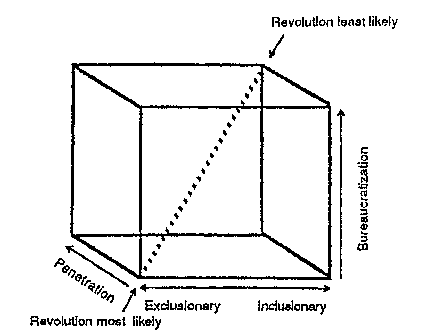
209
regimes tend to attack and undermine exactly these moderate elements.
19.
Finally, closed authoritarian regimes, without intending to do so, valorize the potential oppositional
role of armed revolutionaries. Because such regimes are closed, they readily turn to vicious repression
325 when faced with demands for even the most moderate political or economic adjustments. Thus closed
authoritarian regimes place a premium on the things armed revolutionaries are best prepared to do
330 namely, provide opponents of a regime with the means of self-defense, such as guns, clandestine networks,
safehouses, and even liberated territory within which to survive and carry on oppositional politics. On the
other hand, authoritarian regimes that are militarily and organizationally strong and have secure borders
335 generally do not provide sufficient leeway for armed revolutionaries to mobilize mass support, even though
they too tend to radicalize their opponents. Like it or not, then, some of the most brutal and repugnant
authoritarian regimes in the Third World, such as those found in Latin America'’ southern cone, in various
340 East Asian and Middle Eastern countries, and especially in South Africa, are probably too powerful and
ruthless to be toppled by armed struggle.
20.
From the viewpoint of would-be revolutionaries, the ideal situation is to face an exclusionary and
345 repressive authoritarian regime that lacks strong control of its entire territory or borders (or else suddenly
loses such control). During World War II, parts of Nazi-occupied Europe fit this formula. More to the point
for this analysis of the contemporary Third World, quite a few states in Southeast Asia, Central America,
350 and Africa fall into this category: they are simultaneously, politically exclusionary repressive, and not fully
in control of their nominal territories. Facing such regimes, revolutionaries can build broad coalitions
among many groups fundamentally opposed to the existing political arrangements and authorities, because
355 many groups in society need the coercive means and uncompromising political formulas that the
revolutionary cadres have to offer.
Figure 1. A graphic representation of states according to degrees of(l) penetration of national
territory, (2) incorporation of socially mobilized groups, and (3) bureaucratization of the state
administration and armed forses.

